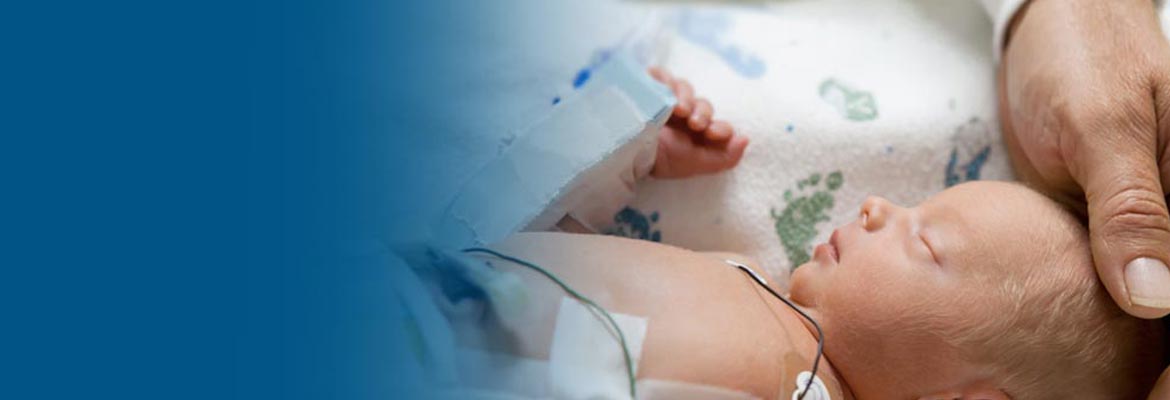HOW CAN WE HELP YOU? Call 1-800-TRY-CHOP
Researchers Dedicated to Solving Rare and Complex Diseases
Soon after its designation as a CHOP Frontier Program for FY 2020, the Epilepsy NeuroGenetics Initiative (ENGIN) demonstrated its determination to learn more about developmental and epileptic encephalopathies (DEE). Researchers built upon their previous genomic findings and linked genetic mutations with clinical features of DEE, painting a picture that elucidates the cause of these hard-to-treat brain disorders. In the study that appeared in the American Journal of Human Genetics, researchers evaluated phenotypic and genetic information collected from several cohorts for more than a decade, and they found 11 genetic causes of specific clinical features.
“What we have done with this study is re-engineered the cognitive process that goes on when clinicians discover a new syndrome,” said Ingo Helbig, MD, attending physician at ENGIN, director of the genomic and data science core of ENGIN, and lead investigator of the study. “As the amount of deep phenotypic data available to us increases, we now have the ability to identify novel genetic causes of particularly severe forms of epilepsy that are targets for new treatments.”
Pinpointing Genetic Mutations
Researchers in the Center for Applied Genomics discovered a genetic variation that drives the development of inflammatory bowel disease (IBD), such as Crohn’s disease and ulcerative colitis. Both of these diseases have known genetic components, and more than 240 genetic regions are associated with IBD.
The new findings published in the Journal of Crohn’s and Colitis focus on a single nucleotide polymorphism (SNP) on the JAK2 gene. The researchers identified two proteins on this SNP that regulate gene expression, and they may serve as a potential therapeutic target for IBD. This genetic pathway is also associated with other immune disorders.
“Using this method, we believe we have added an important tool to our arsenal of SNP-to-gene assignment methods, allowing us to pinpoint disease-driving genetic mutations that have previously been difficult to properly assign risk,” said Hakon Hakonarson, MD, PhD, director of the Center for Applied Genomics. “This study in particular also provides evidence that drugs targeting JAK2 may provide some benefit for those patients suffering from IBD who carry mutations that upregulate the JAK2 pathway, though such precision-based approaches would need to be validated in clinical studies.”
New Insight Into Cells
A new imaging method developed by researchers at CHOP helps visualize the enteric nervous system (ENS), a part of the human colon that is typically hard to view. The method combines several techniques and allows the ENS to be viewed in 3-D. The ENS regulates many functions of the bowel, such as the movement of food and nutrients. Defects in the ENS cause Hirschsprung disease, a birth defect that requires surgical repair, and other conditions in which food is unable to move properly through the bowel.
“Having 3-D images of the colon enteric nervous system provides us with new insight into the cells that control bowel function, and may help us better understand disorders of the colon,” said Robert Heuckeroth, MD, PhD, a pediatric gastroenterologist in the Division of Gastroenterology, Hepatology and Nutrition at CHOP, and Research Director and Norman and Irma Braman Endowed Chair of CHOP’s Lustgarten Center for GI Motility. “To do this work, we had to invent a new way to make the colon invisible, stain the cells we were interested in seeing, and generate thousands of images.”
The findings appeared in Gastroenterology, and the images generated from the study are available on a public database.
A collection of grants are allowing researchers at CHOP to establish a Center for Machine Learning in Urology, with the goal of improving the understanding the pathophysiology, risk stratification, identification of novel therapeutic targets, and prediction of treatment responses of benign urological diseases among children and adults.
Gregory Tasian, MD, MSc, MSCE, attending urologist and associate professor of Surgery and Epidemiology at the Perelman School of Medicine at the University of Pennsylvania, will lead the center, which is a joint venture between CHOP and Penn.
“Over the last five to 10 years, data have become bigger and more complex, and along with that is the challenge of how to efficiently and effectively analyze those data,” Dr. Tasian said. “Machine learning is one of those tools that can handle that complexity. Specifically in urology, there are tremendous knowledge gaps across the lifespan, and many of those knowledge gaps exist because we haven’t had the tools to analyze some of those data.”
In addition to the research goals, Dr. Tasian anticipates the Center will serve as an infrastructure that will allow for the dissemination of the knowledge gained, and it will serve as a forum for mentoring and training at CHOP and other institutions.
Groundbreaking Leadership
Pediatric hematologist-oncologist Theodore Laetsch, MD, joined CHOP this year, where he will launch the Very Rare Malignant Tumors Program. The purpose of the program is to develop new treatments for children with rare and complex tumors. In pediatrics, rare tumors are generally those that affect fewer than 100 children per year, according to Dr. Laetsch.
“CHOP is a great place for this program because rare tumors span many groups and departments, and the collaboration between the faculty and staff of these programs is what makes it work,” Dr. Laetsch said. “We also have a valuable alignment with Penn. Some rare tumors in children, such as colon cancer and ovarian cancer, are more common in adults. We approach treatment of these by working collaboratively with medical oncologists at Penn who are experts in these diseases. It’s this overall environment that makes CHOP ideal.”
Some of the specific research areas Dr. Laetsch anticipates focusing on are molecular targeted therapies, research into new treatments for thyroid cancer, and translational research in rare subtypes of sarcoma including TRK fusion cancers.
“We want to learn the most we can from our patients and apply that knowledge to future patients,” Dr. Laetsch said. “Given the very small number of patients with some of these cancers, it hasn’t been possible to define standard treatments. By studying the genetic factors that drive these rare cancers, we are working to identify new treatments to try based on the specific genetic changes in the cancer, regardless of where the tumor arose.”
CHOP joined four other research institutions in a large-scale, coordinated research effort to develop new treatments for patients with single ventricle heart defects (SVDs), thanks to receipt of a $1 million Innovation Fund endowed by Additional Ventures, a nonprofit dedicated to helping children with congenital heart defects. SVDs are rare, affecting about five in 100,000 newborns each year, and they require multiple open-heart surgeries.
CHOP pioneered a surgical technique that is used worldwide for SVDs, and researchers continue to search for ways to improve outcomes in these patients by gaining more understanding of the condition’s causes and developing functional cures.
“This joint initiative will fuel breakthrough research that will meaningfully improve the lives of children born with single ventricle defects,” said Bryan Wolf, MD, PhD, Chief Scientific Officer at CHOP. “We look forward to collaborating with these other institutions and continuing the cutting-edge research that has put our Cardiac Center at the forefront of pediatric care.”





